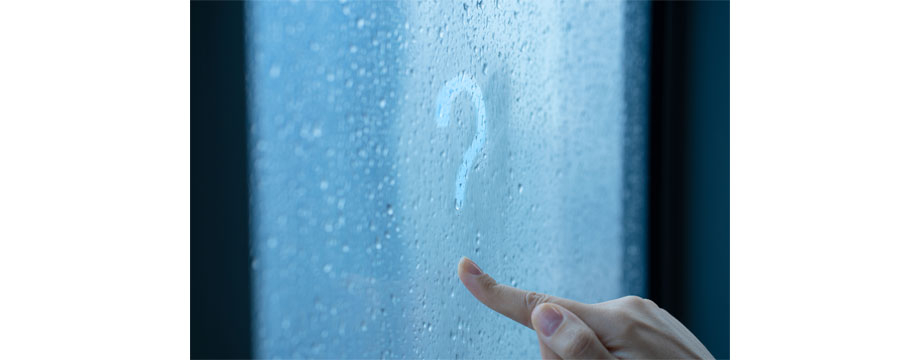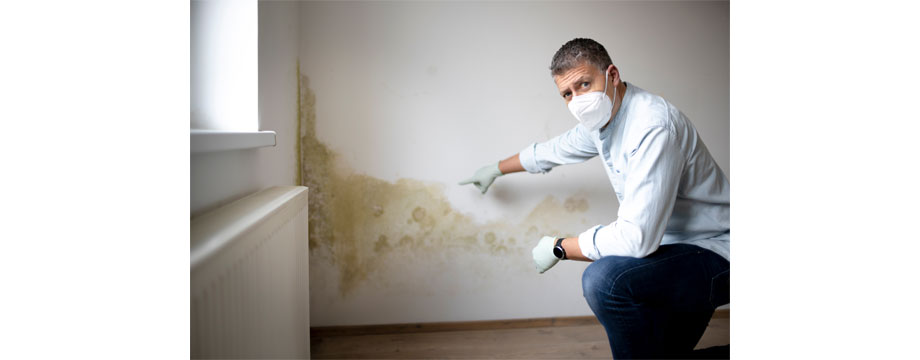Awareness around mould and damp amongst housing tenants is at an all-time high. A recent Housing Ombudsman spotlight report highlighted the need for all housing providers to ‘adopt a zero tolerance approach to damp and mould interventions’. 51% of renters surveyed have experienced damp and mould problems, according to a YouGov poll commissioned by Safeguard Europe.

Housing providers must be empathetic to the damp problems tenants face. It is not enough to simply blame ‘lifestyle choices’ for damp and mould problems. Under the Homes (Fitness for Human Habitation) Act 2018, housing providers are required to deliver housing that is free from damp and mould. All property managers require the know-how to diagnose and deliver practical damp solutions.
“Landlords I feel don’t care …”
“There is a culture of not caring as they hear it all the time.”
- 2 anonymous residents surveyed by the Housing Ombudsman.
It’s clear that mouldy homes have as much of a mental impact on sufferers as they do a physical impact. Break the “doesn’t care” perception by exploring practical measures to beat excess condensation and mould growth.
The key factor of mould growth that can be controlled by housing providers is humidity. If the relative humidity of a property is kept below 70%, mould will not grow. By focusing on humidity, excess condensation and their relationship to mould growth, we can beat mould for good. So familiarise yourself with the four common approaches to beating damp problems and enhance the service you deliver for your tenants.


Reduce the amount of water in the air
Homes must be surveyed to ensure that air ventilation is sufficient. Newer homes are tightly sealed with draught proofing, double glazed windows and efficient modern insulation. When showers and cookers are added into the equation, humidity rises very quickly. There are various types of fan available on the market to provide extra ventilation, from smart humidity-controlled extractor fans to ceiling vent Positive Input Ventilation.
Increase wall surface temperature
Older housing stock may suffer from uneven surface temperature. Certain walls or parts of the home are less insulated, causing the disparity in temperature that leads to excess condensation and mould growth. Insulating plasters, titles and aerogel boards can be installed in homes with cold walls to reduce humidity and heat loss. Mould will not grow in a non-humid environment.
Moisture buffering
Soft furnishings and natural materials like soft woods naturally absorb moisture. Rooms that previously had zero mould problems might suddenly find them develop if they are emptied of furniture and possessions. Even a process like gloss-painting a room can rob environments of their moisture buffering properties. This is an important factor to consider when tenancies come to an end, especially in the winter months. The last thing housing providers need is unexpected mould growth just before new tenants move in.
Short term mould control
These fixes take time and planning, but nobody should have to live in a mould-ridden house. Housing providers should ensure that they equip tenants with everything they need to protect vulnerable surfaces from mould growth. There is a wide selection of anti-mould products available on the market, from mould remover sprays to anti-condensation paints. It is very important to ensure that biocidal products are used to treat mould growth. Everyday bleach-based mould sprays clean the surface stain, but only products that include a biocidal sanitiser will ensure that mould does not regrow.
To further implement the recommendations made by the Housing Ombudsman Spotlight Report, Safeguard Europe offers a RIBA-approved CPD seminar - ‘Condensation in Buildings’ - to all housing associations and local authorities. This 1-hour training session is aimed at upskilling housing industry professionals with the latest condensation-controlling methods developed in-house at the Safeguard R&D Laboratory. ‘Condensation in Buildings’ and the full CPD range is free to book now at www.safeguardeurope.com or by calling us on 01403 602145.
- Log in to post comments













